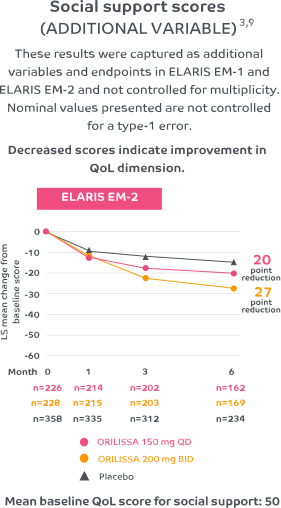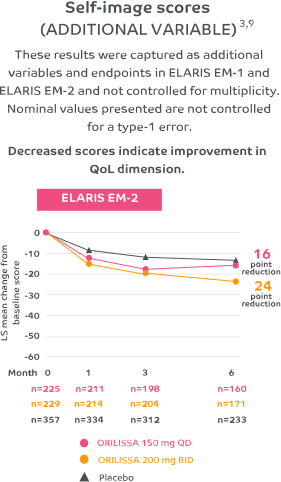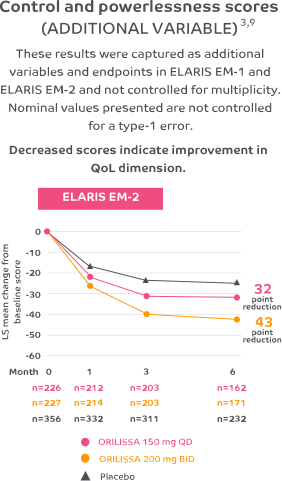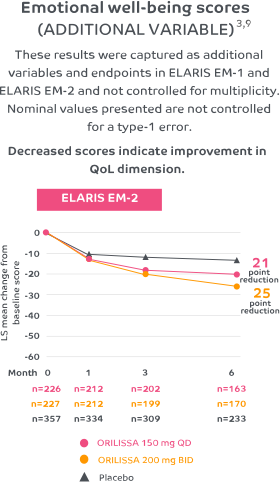*Dysmenorrhea responder threshold was ≥0.81-point decrease from baseline in ELARIS EM-1 and ≥0.85-point decrease from baseline in ELARIS EM-2. NMPP responder threshold was ≥0.36-point decrease from baseline in ELARIS EM-1 and ≥0.43-point decrease from baseline in ELARIS EM-2.
†In ELARIS EM-1 and EM-2, the mean changes in dysmenorrhea and NMPP scores from baseline to month 6 were secondary endpoints.
‡In ELARIS EM-1 and EM-2, the mean changes in dysmenorrhea and NMPP scores from baseline to each month (except month 6) were non-ranked secondary endpoints. Appropriate multiplicity adjustments were not applied.
§Baseline and monthly visit values were based on a 35-day mean.



























